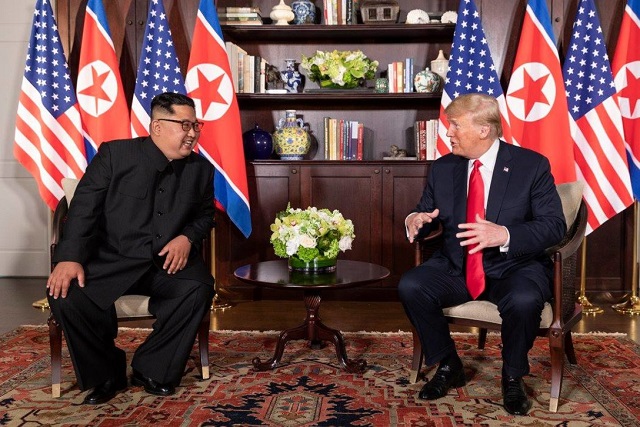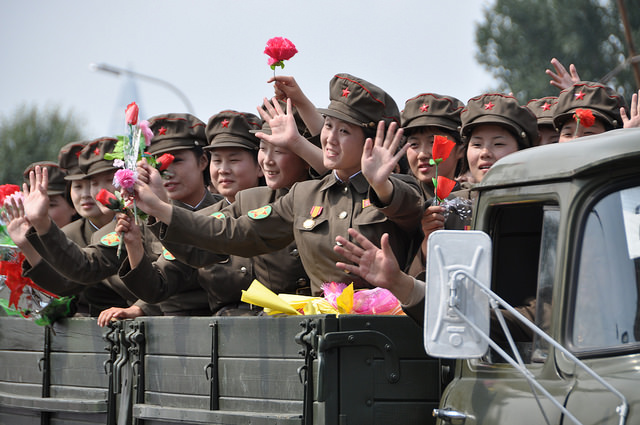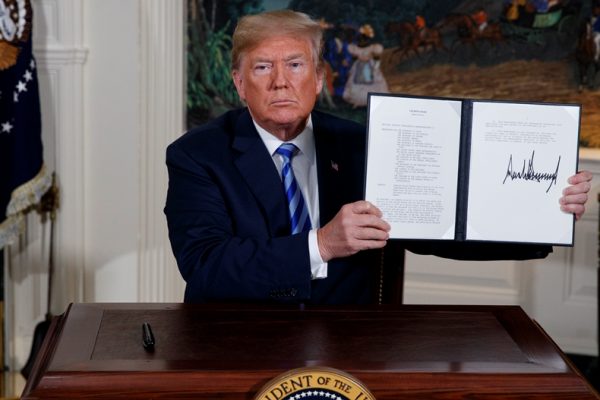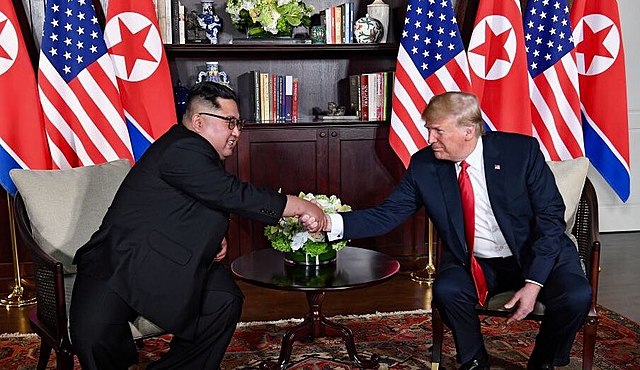Reciprocal irreversibility is the key to North Korean denuclearisation
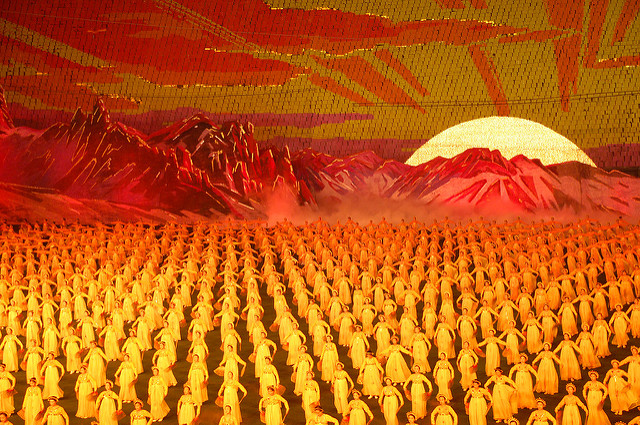
In his annual New Year’s address, North Korean leader Kim Jong-un said he is committed to denuclearisation but will change course if the US persists with ‘sanctions and pressures’. The statement confirmed that all steps taken by North Korea to date are fully reversible. Conversely, in the difficult negotiations on denuclearisation, the key principle is ‘irreversibility’. The great wall of distrust built over 68 years’ dealings with one another makes all sides determined to ring-fence the future against the possibility of reversibility by the other side. Without an understanding of all sides’ requirement for irreversibility, progress will remain elusive.
Westerners have difficulty grasping the continuing hold of historical memories in shaping Asians’ current policies. Most also tend not to take North Korea seriously, demonising and caricaturing its young leader as an unserious figure of fun. Few bother trying to understand its security concerns and admit the possibility that its paranoia might be grounded in long experience.
The Korean War began with unprovoked aggression by the North in 1950. Since then, Pyongyang has earned its credentials as one of the world’s worst human rights abusers, as attested in the UN commission of inquiry report and by North Korea’s assassinations of political opponents, terrorist attacks on foreign soil, abductions of Japanese and South Korean citizens, and attacks on targets in South Korea with significant losses of life. It has acquired nuclear weapons in breach of its obligations under the Nuclear Non-proliferation Treaty, made repeated commitments to abandon them in return for security assurances and economic assistance, shelved its nuclear ambitions temporarily, and then broken its promises serially.
The US carried out obliteration bombing of the North during the Korean War, stationed atomic weapons in South Korea in 1958 in breach of the 1953 armistice agreement, and refused to honour commitments under the 1994 agreed framework to provide aid to the North. Many US global actions reinforce the narrative of an America that can’t be trusted. Russia’s actions in Ukraine, China’s defiance of the Permanent Court of Arbitration’s 2016 South China Sea ruling, and the US’s withdrawal from the 2015 Iran nuclear deal confirm the ugly reality that big powers get away with breaking international agreements virtually scot-free.
Nuclear weapons earned Kim a summit with US President Donald Trump as an equal; abandoning the quest for them brought an undignified early death to Libyan leader Muammar Gaddafi and renewed threats against Iran. The reinstatement of US sanctions on Iran, explained President Hassan Rouhani and Ayatollah Ali Khamenei to the North Koreans, proves America’s bad faith and untrustworthiness. Security to Kim might therefore mean agreeing to freeze his nuclear and missile capabilities at existing levels in order to avoid US preemptive military strikes today, but retaining those capabilities in order to deter punitive US strikes tomorrow.
Despite Trump’s declaration that North Korea was no longer a nuclear threat, the evidence shows that North Korea continues to produce intercontinental ballistic missiles and nuclear materials. The US cannot accept symbolic but inconsequential dismantlement that ‘can be reconstituted within months’ as an adequate basis for full normalisation and a peace treaty. The declaration of an end to war, once issued, cannot be taken back. It would weaken avenues for US pressure on the North like military exercises and sanctions. So the US demands proof of Pyongyang’s sincerity, with an inventory of nuclear material and production facilities verified by international inspectors.
Pyongyang wants the US to abstain from joint military exercises with the South, provide economic assistance and security guarantees, and open up diplomatic relations. All of these can be suspended at any time without notice on a presidential whim. But complete denuclearisation by North Korea cannot be reversed. So, on 20 December, a commentary published by the official North Korean news agency said: ‘When we refer to the “denuclearization of the Korean Peninsula,” it means the removal of all sources of nuclear threat not only from the North and the South but also from all neighboring areas targeting the peninsula.’ In other words, removing the US nuclear umbrella from Japan and South Korea is a precondition of North Korea’s denuclearisation.
Hence, too, Pyongyang’s counter-demand that the Korean War be declared over in order to launch the process towards full normalisation. The language and numbered sequencing of the Trump–Kim declaration of 12 June were deliberate. ‘New US–DPRK relations’ and ‘a lasting and stable peace regime on the Korean Peninsula’ came before a commitment to ‘work towards’ denuclearisation of the whole peninsula.
Insisting that it has already made enough concessions, North Korea has become more forceful in demanding reciprocal gestures from Washington. In his address to the UN General Assembly on 29 September, Foreign Minister Ri Yong Ho noted that ‘continued sanctions are deepening our mistrust’. ‘Without any trust in the US’, he added, ‘there will be no confidence in our national security and under such circumstances, there is no way we will unilaterally disarm ourselves first’. On 2 November, Pyongyang threatened to resume the build-up of nuclear forces unless US sanctions are lifted and bilateral relations are improved.
A split is evident between Seoul and Washington on the use of sanctions as a tool with which to pressure Pyongyang. Against US opposition, South Korea supports a continued loosening of sanctions, arguing that economic development will give incentives to the North to cooperate on denuclearisation. Once sanctions are lifted, however, efforts to reimpose them will be hostage to Chinese and Russian veto in the UN Security Council.
Calculating that Trump has a greater personal investment in a ‘win’ on North Korea, Pyongyang has also been trying to drive a wedge between the president and his senior advisers. Every new hardline comment from Washington is denounced as a violation of the statement and spirit of the Singapore declaration.
We must avoid a return to the ‘fire and fury’ days of 2017 and the associated risk of a catastrophic war in East Asia. This makes it critical, in South Korean President Moon Jae-in’s words, to find the ‘intersecting point’ between the competing US and North Korean calls for steps towards denuclearisation and an end to US hostility.





